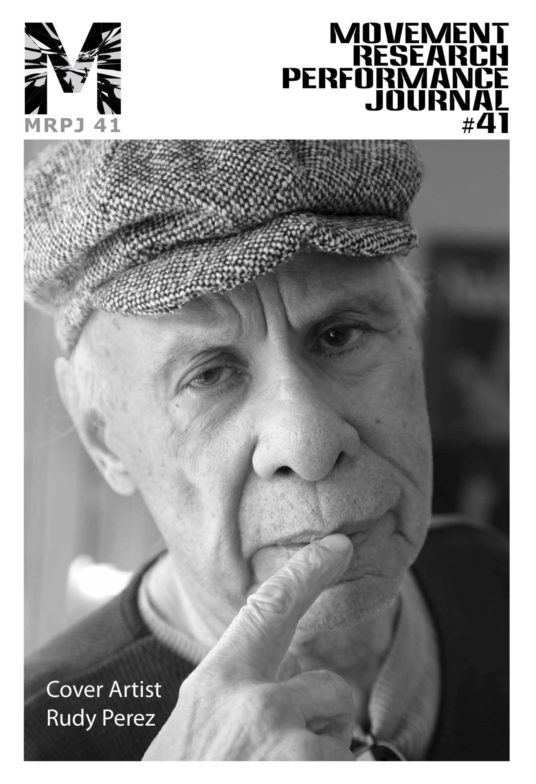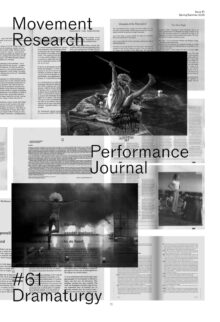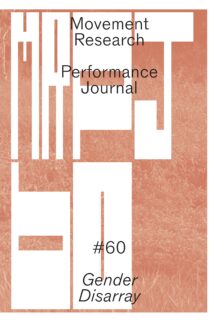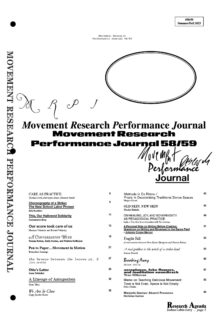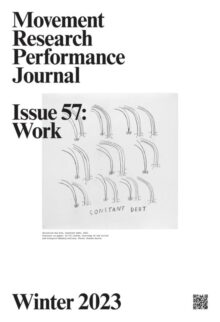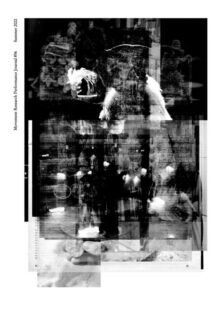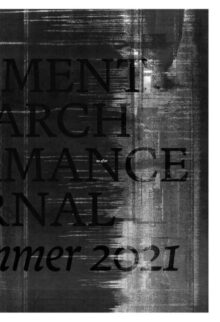EDITOR’S LETTER
So, “Judson”:
A place, an ideology, a historic artist collective, a present-day performance series. All of these Judsons live in this edition of the Performance Journal. This issue is about Judson, but more than Judson.
Joshua Shirkey embeds the Judson Dance Theater in a broader discourse of visual art history. Pasid Aramphongphan considers its role in queer performance history. Tere O’Connor writes about its democratic politics . . . and moving beyond them. Karen Sherman takes us inside the Judson Church in a way that we’ve never seen before. And Anja Hitzenberger shares portraits of the audience members who most regularly attend the Movement Research at the Judson Church performance series.
This series, as many of you know, celebrated its twentieth anniversary last year and will continue through spring 2013. However, its future is uncertain. Movement Research is currently in discussion with the Church about the possibility of securing a future for the program in their space.
With the future uncertain and the past on everyone’s mind, now is a critical moment for refection. When I called Rudy Perez to tell him that we would like to feature him as the Cover Artist for this issue, he said “I’m so glad this is happening while I’m alive.” His remark shook me. This anniversary will indeed be the last for which many of the Judson Dance Theater artists are still with us.
But this issue is not just about Judson—don’t miss Tim Griffn, Jerome Bel, Asad Raza, Nancy Stark Smith, and all the other thinkers who ignite these pages.
It’s been a pleasure to work together with Trajal, Moriah, Troy, Buck, Zee, and Lydia on this issue. I hope you enjoy reading as much as I have.
Warmly,
Ursula
• • •
COVER ARTIST PORTFOLIO EDITOR’S LETTER
There is something remarkably contemporary about Cover Artist Rudy Perez’s 50-year career. In 1978 Rudy Perez told Jennifer Dunning: “The people at Judson were anti-drama and emotion and I think I suppressed the very thing I’m good at. That’s how I arrived at the stillness that I’m known for.” Goldman isolates this quote in her brilliant essay on Perez’s early work to illuminate the social dimensions at play in suppressing theatricality. In Chris Yon’s interview with Perez, they discuss Perez’s approach to his artistic life (“always work… the day job”) and his current career in Los Angeles. In a reprint of a 1971 essay in Art in America, Deborah Jowitt discusses the sculptural elements of Perez’s work, concluding that: “His is not a direction for all dance to take, but a quiet, private and ultimately fascinating path.” I am thrilled to share some part of that path with readers of MRPJ in this Cover Artist Portfolio. Thank you, Ursula, for making that happen—and thank you, Rudy, for your tenacious vision.
Enjoy,
Lydia
